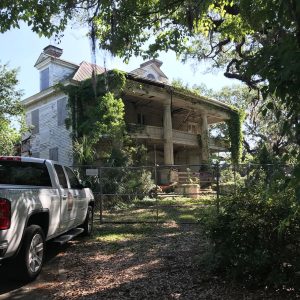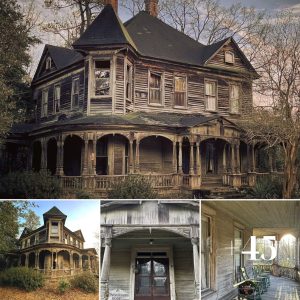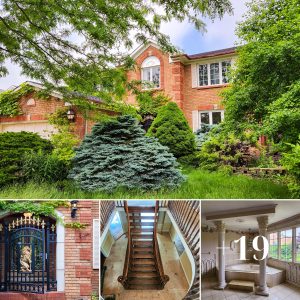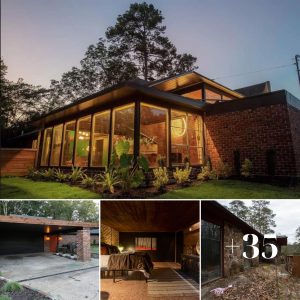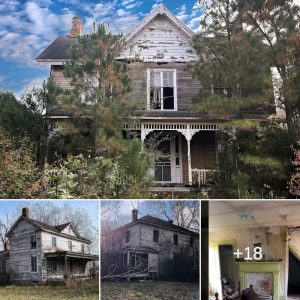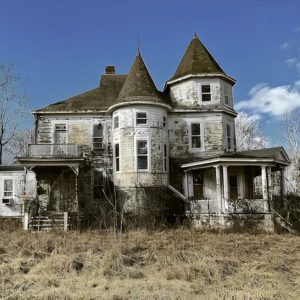Check out this incredible historic photo of the Wonderland Hotel lobby from 1938. The lodge, like the rest of Elkmont, was decorated in a rustic style with large stone and brick fireplaces, hardwood floors, and clapboard walls. The rooms were furnished with cozy country-style pieces, including rocking chairs and wooden sofas.
Stone steps led from the station to the hotel, and these steps became a favorite photo spot for visitors. At the top, rocks from the Little River were cemented to spell out “Wonderland.” Though the steps are still there today, they’re now overgrown and hard to spot.
Vacationers also gathered around the stone fountain in front of the hotel, as shown in photos from the 1920s and 1930s. The fountain still exists today, but it’s slowly being overtaken by nature, so you have to look closely to find it.
Sadly, the Wonderland Hotel itself is long gone. It collapsed in 2005 and what remained was destroyed by a fire in 2017, which was suspected to be arson. Several cabins were also burned. The Appalachian Clubhouse burned down in 1934 but was rebuilt the same year and has since been restored.
In this photo from 2017 by Leland Kent of Abandoned Southeast, you can see one of Elkmont’s main streets in its faded glory. Back in the 1920s and 1930s, Elkmont was the top summer spot for Knoxville’s elite. Dozens of cabins lined the road to the Appalachian Clubhouse in an area called Daisy Town. Other parts of the resort were known as Millionaires’ Row and Society Hill due to their extravagant log homes.
The Levi Trentham cabin is the oldest structure in Elkmont and one of the most significant in the Great Smoky Mountains. Built in 1830, it was home to Levi Trentham, the “Prophet of the Smokies,” who guided many Elkmont visitors. Originally located in Jake’s Creek, the cabin was moved to Daisy Town after Trentham’s death in 1932 to serve as a guest cottage.
Despite his age, Trentham used his carpentry skills to help build several log cottages in Elkmont during the 1910s and 1920s. Features from his original home, like dovetail corners and exterior stone chimneys, were incorporated into many of these structures.
The Avent Cabin is the second-oldest building in Elkmont. Built in 1845, it was acquired in 1918 by Frank Avent and his wife, Mayna Treanor Avent, an artist who used it as a studio. Many of her most admired works were painted there.
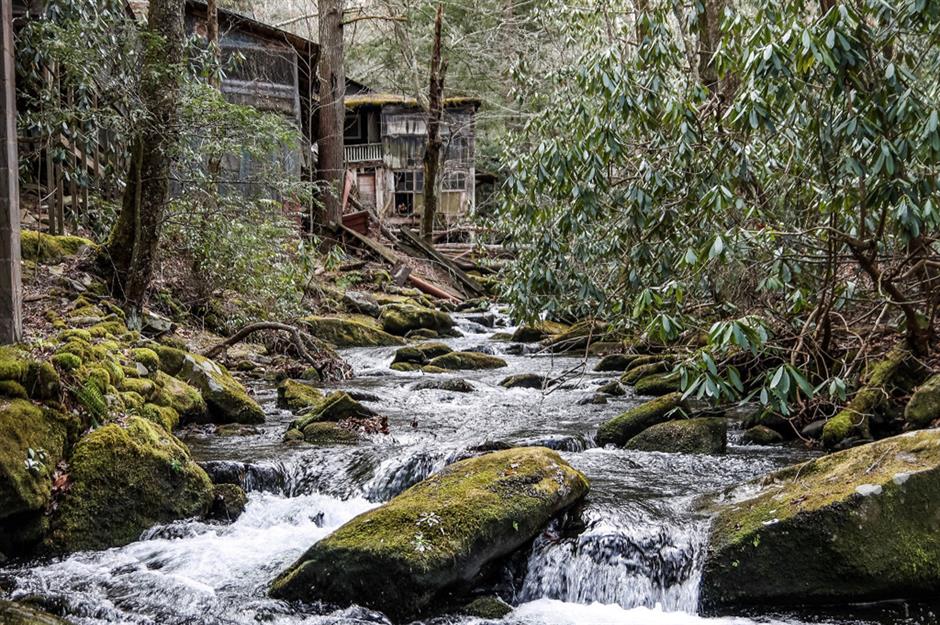 Society Hill, located along Jake’s Creek, was once home to grand vacation cottages built by wealthy Knoxvillians. These homes overlooked the peaceful river, but many have now fallen into disrepair, slowly sliding down the mountainside.
Society Hill, located along Jake’s Creek, was once home to grand vacation cottages built by wealthy Knoxvillians. These homes overlooked the peaceful river, but many have now fallen into disrepair, slowly sliding down the mountainside.
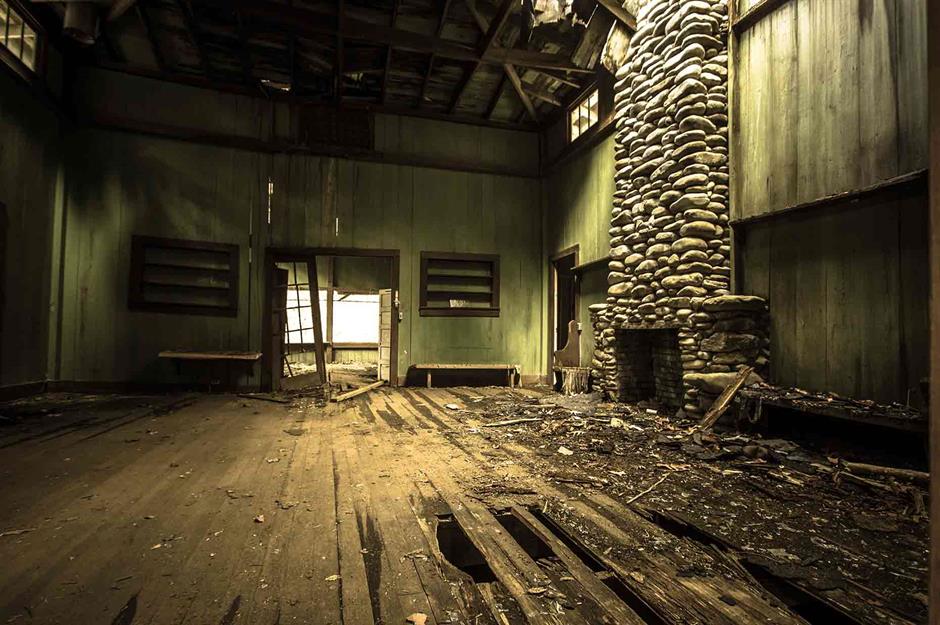
A photo from 2016 shows the interior of one of these abandoned homes, revealing extensive damage. This large residence, with its high vaulted ceiling and a stunning river rock fireplace, was clearly once the retreat of an affluent family. Now, it’s a shadow of its former self, with crumbling floorboards and a collapsed roof.
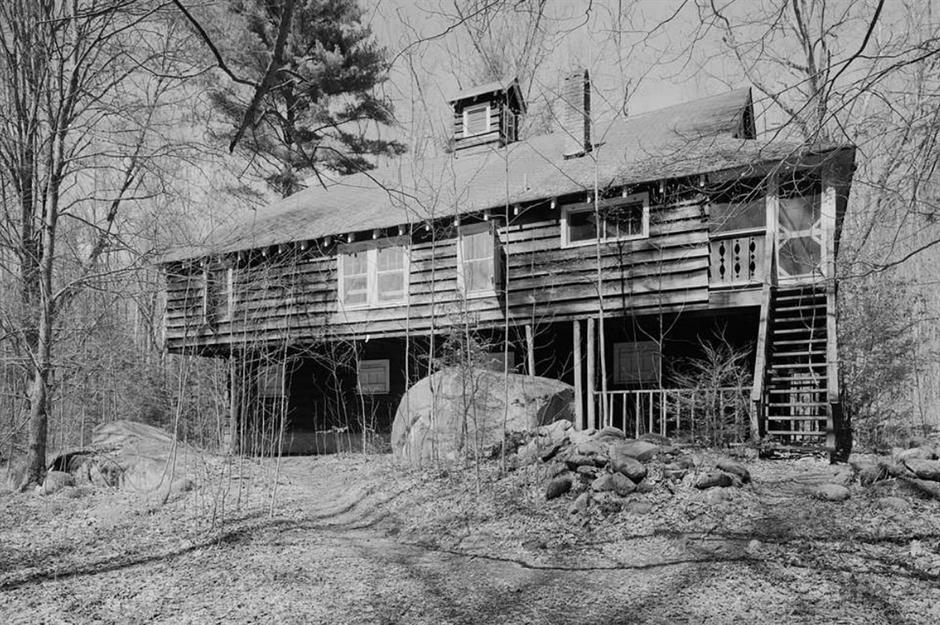
Colonel WB Townsend, the founder of the Little River Lumber Company, had one of the finest structures in Elkmont built, a charming Swiss-style chalet called Spindle Top. He spent many summers there with his wife Alice. Known also as the Miller Cabin, it was later leased to newspaper editor Loye Miller.
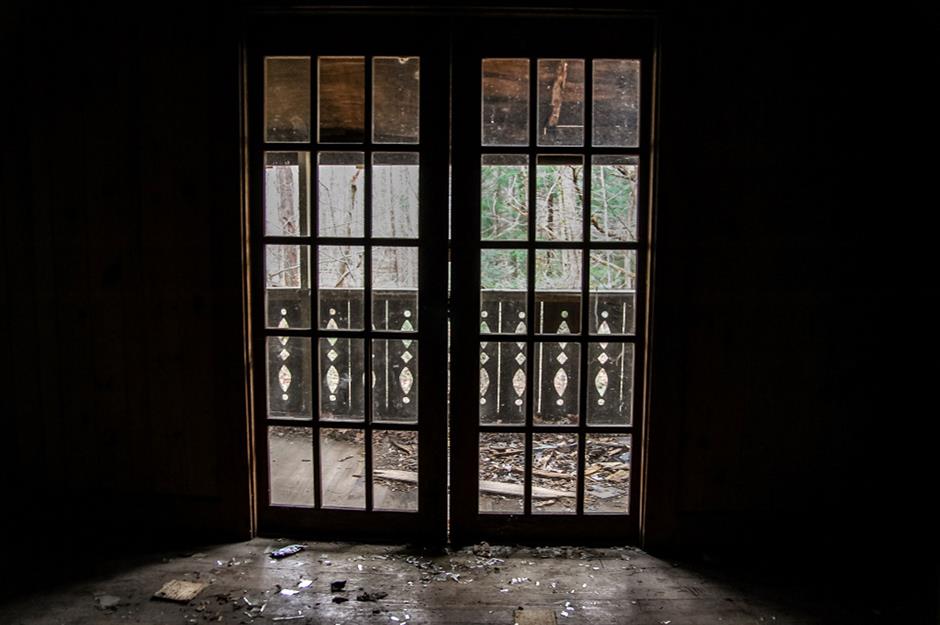
Today, the chalet is in a state of disrepair. Debris litters the floors, and the French doors leading to the porch are missing windowpanes. However, the structure itself remains relatively sturdy, unlike the more fragile cottages of Society Hill that line the river.
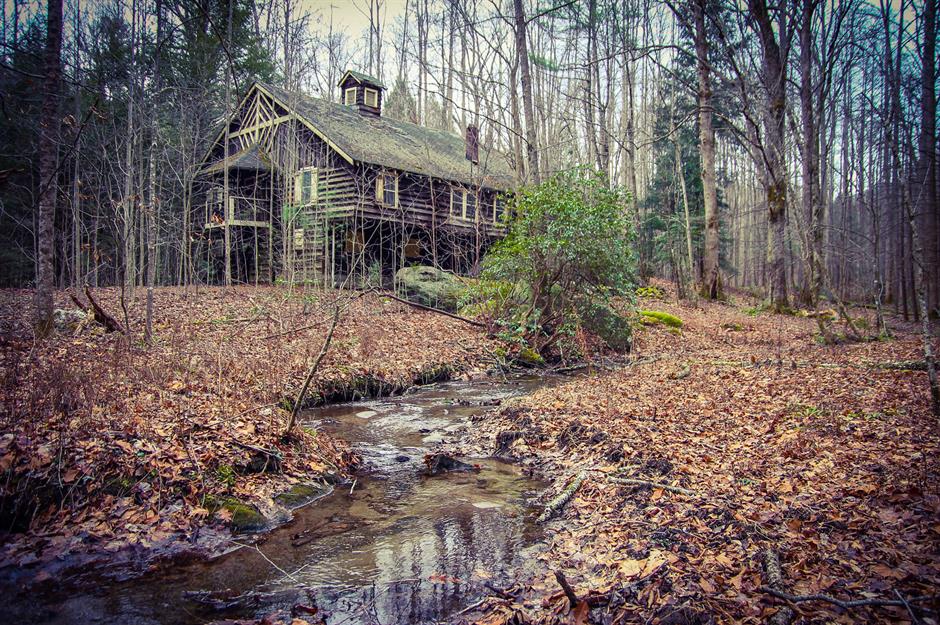
Colonel WB Townsend and his wife Alice also rented out several luxurious nearby cottages, including Faust Cabin and Cambier Cabin. This area, along with Society Hill, was known as Millionaires’ Row and was the most coveted part of Elkmont.
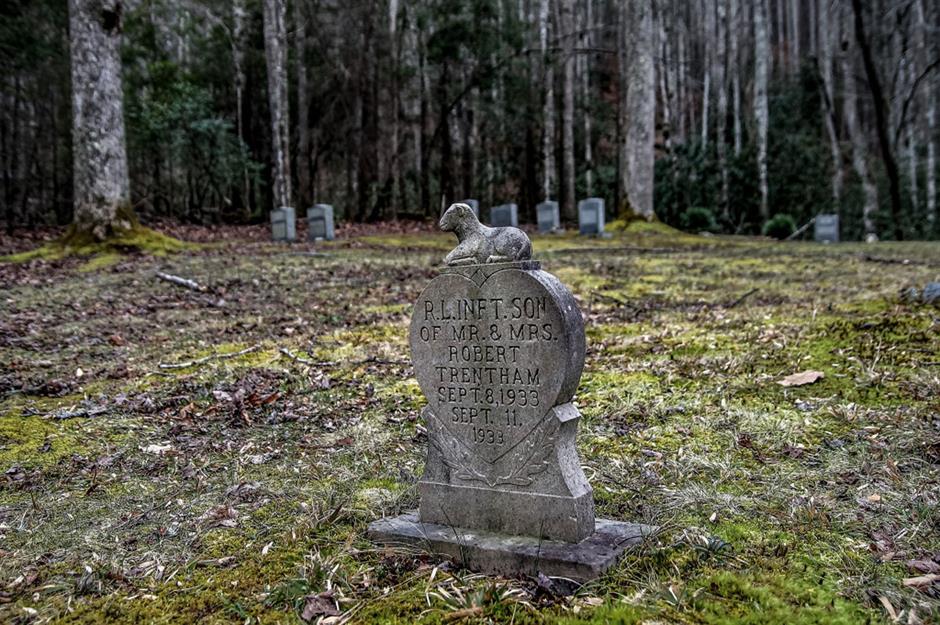
However, Elkmont wasn’t exclusively for the wealthy. It also had more modest areas with simple residences for those working in the logging industry and humble vacation cottages owned or rented by Knoxville’s less affluent residents. Despite its size, the town had plenty of amenities, including a church, general store, post office, theater, and even a graveyard. Given its eerie atmosphere today, it’s easy to see why Elkmont was named Tennessee’s creepiest ghost town in 2022 by Thrillist.
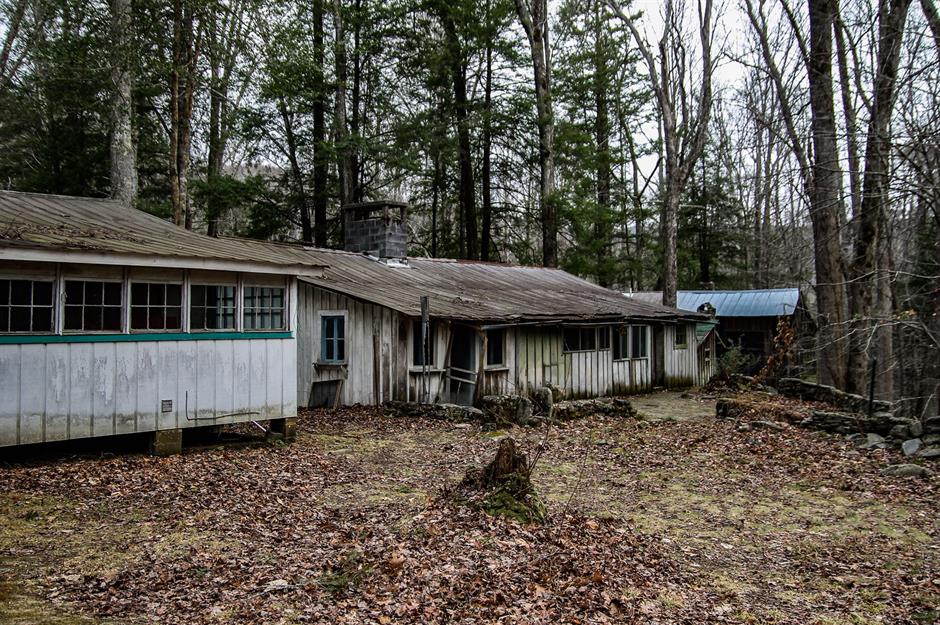
Ironically, efforts to preserve Elkmont and its surrounding wilderness led to the town’s decline. In 1920, cottage owner William P. Davis, inspired by Yellowstone National Park, partnered with fellow landowner David C. Chapman to campaign for the creation of a national park in the Great Smoky Mountains.
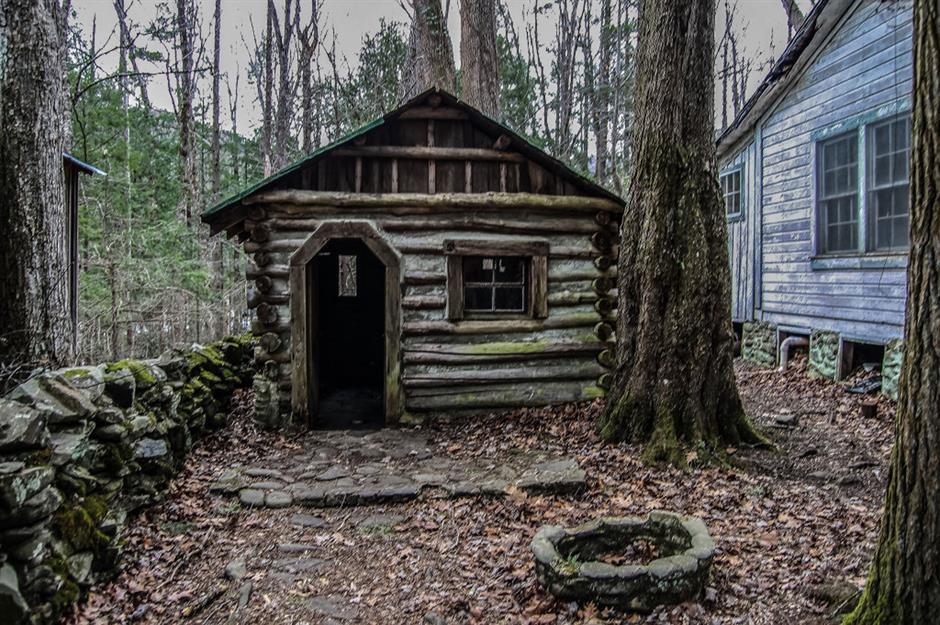
Their efforts succeeded, and in 1925, the Little River Lumber Company sold 76,000 acres to the state of Tennessee. Many long-term residents around Elkwood were forced to leave, but property owners in Elkmont were given the option to sell their cabins at half price in exchange for lifetime leases.
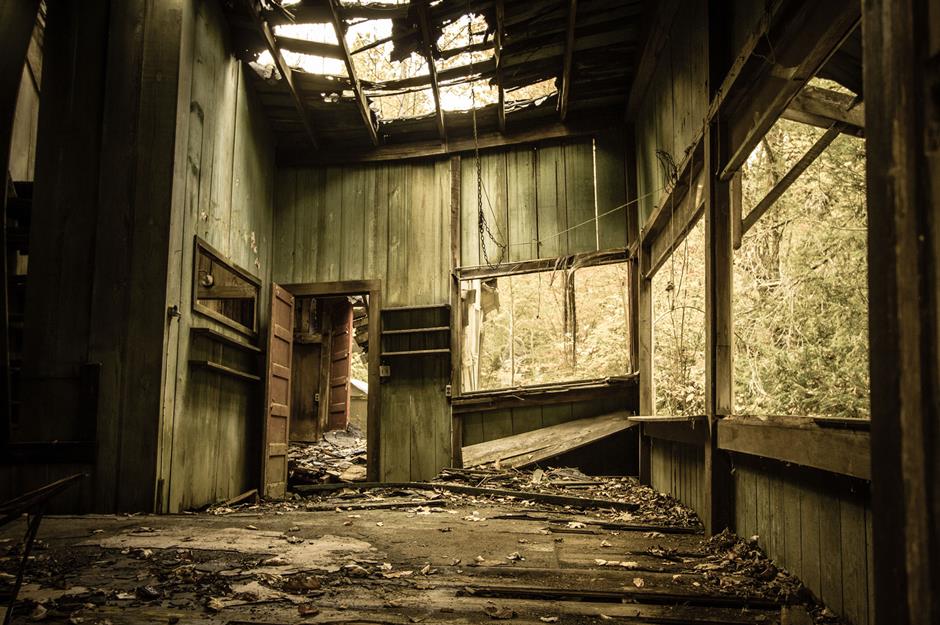
The lifetime leases were converted to 20-year leases in 1952 and renewed again in 1972. However, the leaseholders’ luck ran out in 1992 when the National Park Service refused to renew the contracts. This decision was influenced by the Sierra Club, which argued that private land ownership shouldn’t be allowed within National Parks. As a result, the landowners were effectively evicted, and the cabins and other structures were abandoned.
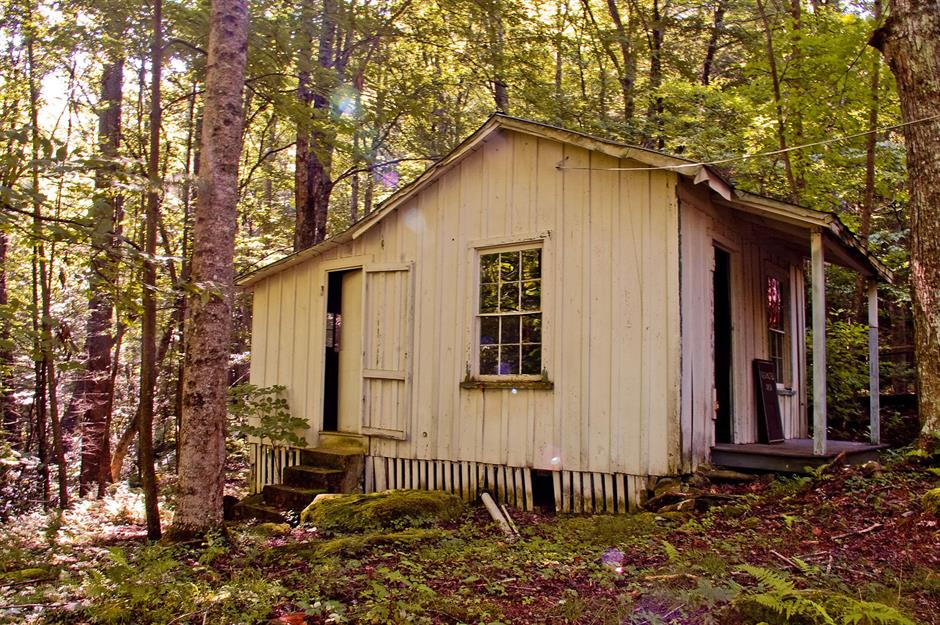
In the 1980s, there was a plan to demolish all structures in Elkmont to return the area to nature. However, this was halted in 1994 when the Wonderland Hotel and other notable buildings were placed on the National Register of Historic Places, forming the Elkmont Historic District, which consists of 18 buildings.
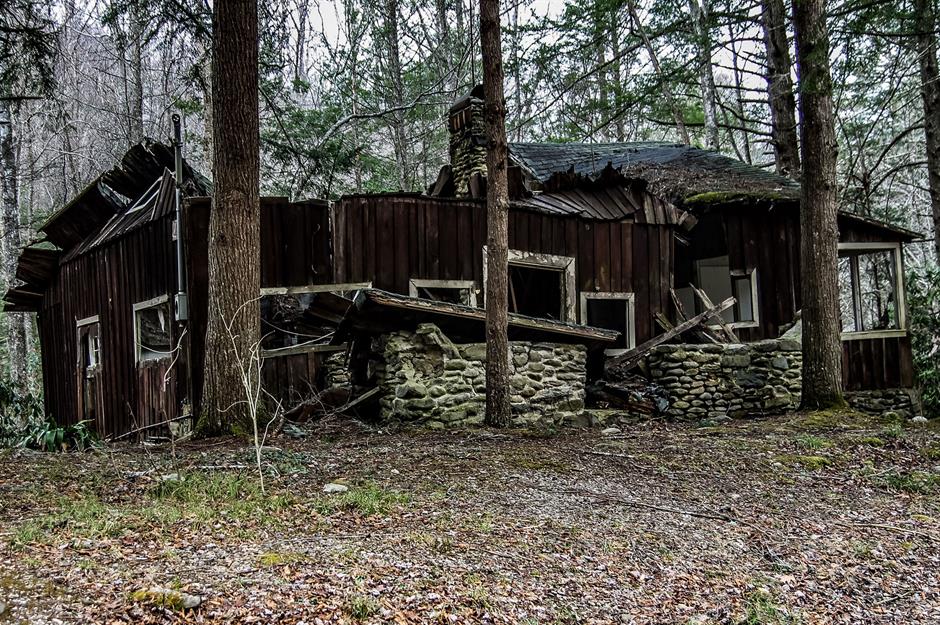
Despite their protected status, little was done to preserve these historic houses, and they continued to deteriorate. Debates about the future of the ghost town dragged on for years, and as a result of this inaction, the Wonderland Hotel collapsed in 2005.
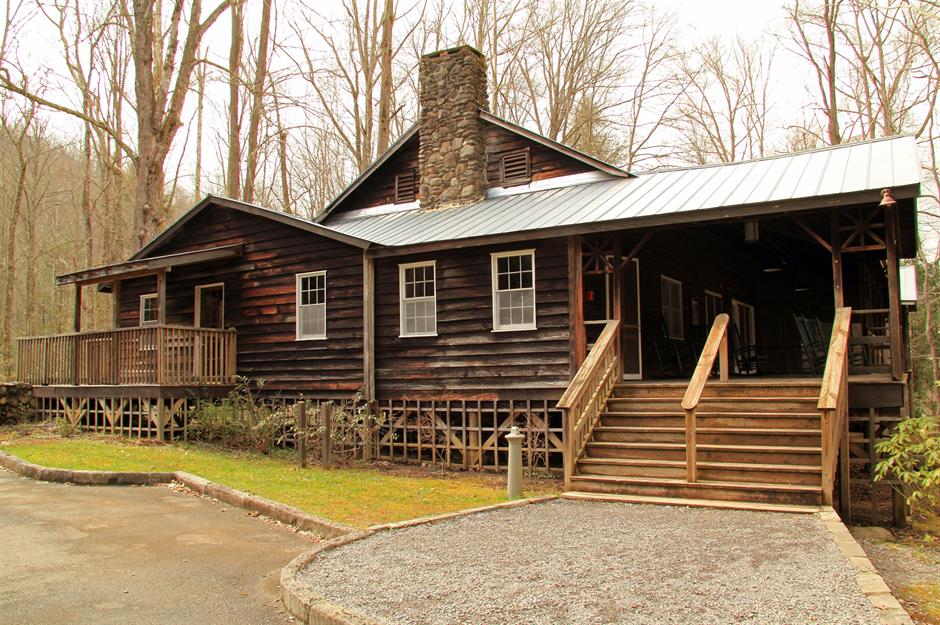
Finally, in 2009, 15 years after Elkmont’s finest structures were declared important historical monuments, preservation work began. The Appalachian Club was the first building to be renovated and was restored to its former glory that year.
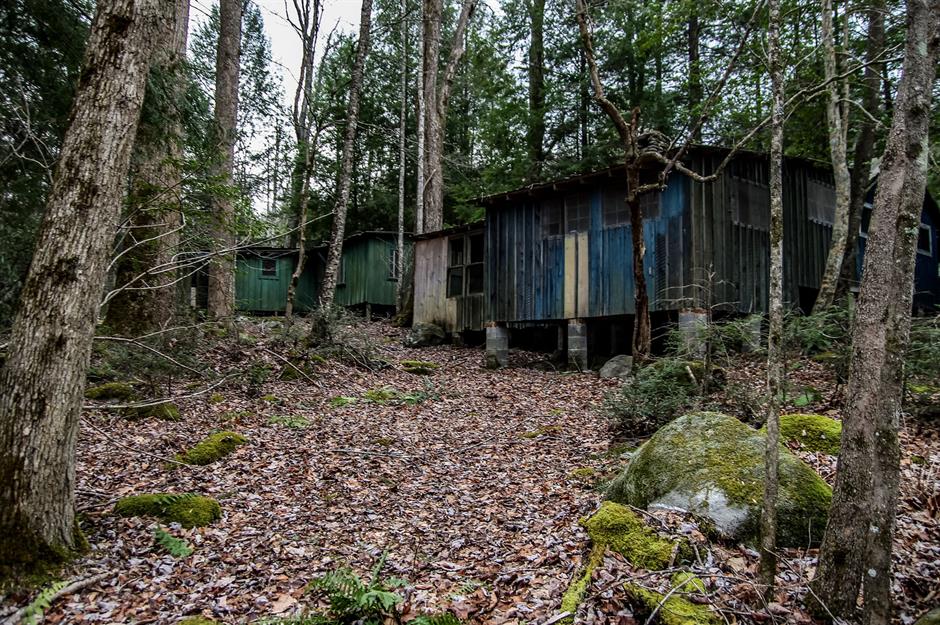
In 2009, the National Park Service announced plans to restore 19 historically significant cabins, while 55 of Elkmont’s 74 cabins were slated for demolition. Restoration work is ongoing, and so far, 16 buildings have been revitalized, all located in the Daisy Town neighborhood. Unfortunately, in 2017, 29 structures along the Little River Trail and Jake’s Creek Trail were demolished.
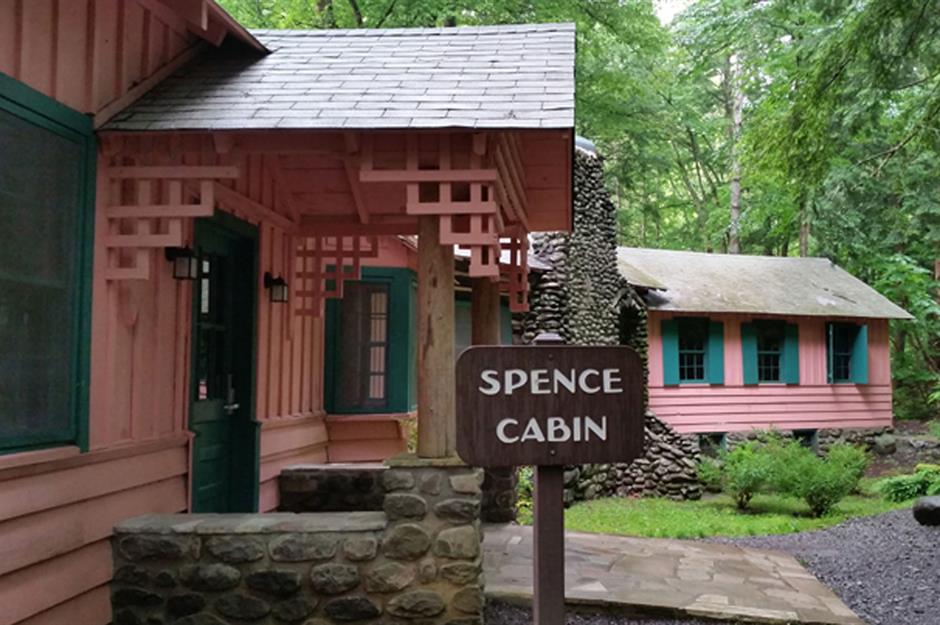
Among the restored properties are the Levi Trentham Cabin, the Avent Cabin, which is Elkmont’s oldest structure, and the charming pink Spence Cabin, now available for weddings and other events through the National Park Service. The Creekmore Cabin, built around 1910 and originally owned by the Creekmore family, has also been restored. Additional preserved structures include the Mayo Cottage and its servants’ quarters.
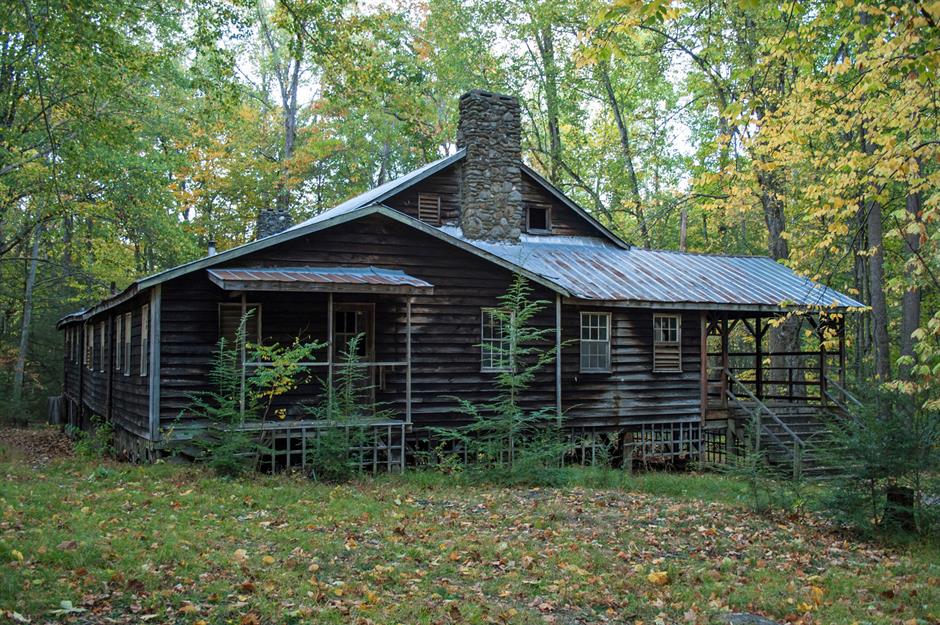
According to WBIR Channel 10, this once-forgotten corner of Tennessee is welcoming visitors again. Daisy Town is being transformed into a living museum, with 16 preserved structures open to the public and more undergoing restoration.
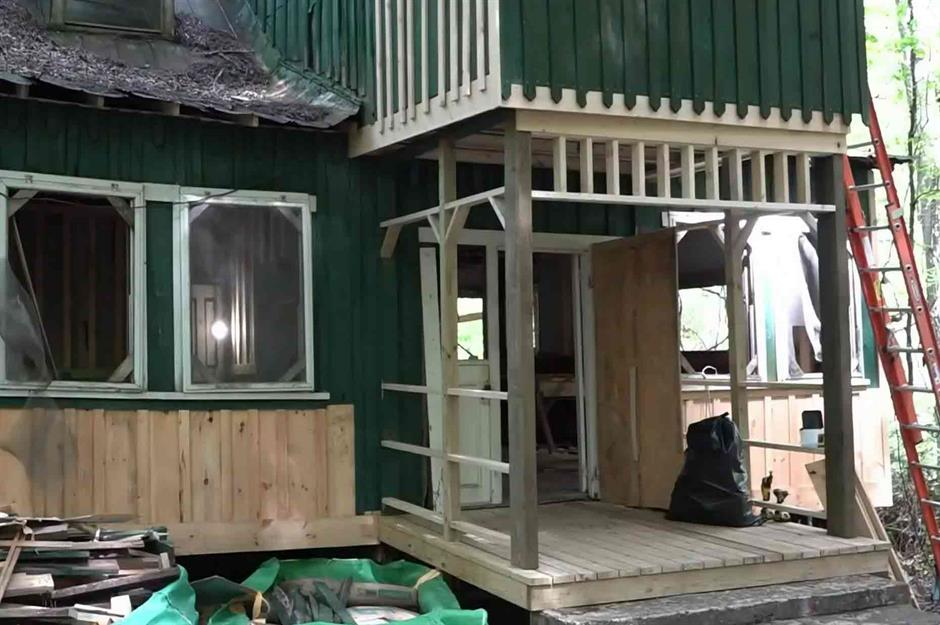
The extensive preservation project, estimated to cost around $9 million, aims to show visitors what Elkmont looked like a century ago. Documented in April 2023, WBIR Channel 10 reported on the restoration of one cabin—the summer home of David C. Chapman, a historic resident who advocated for the creation of the Great Smoky Mountains National Park.
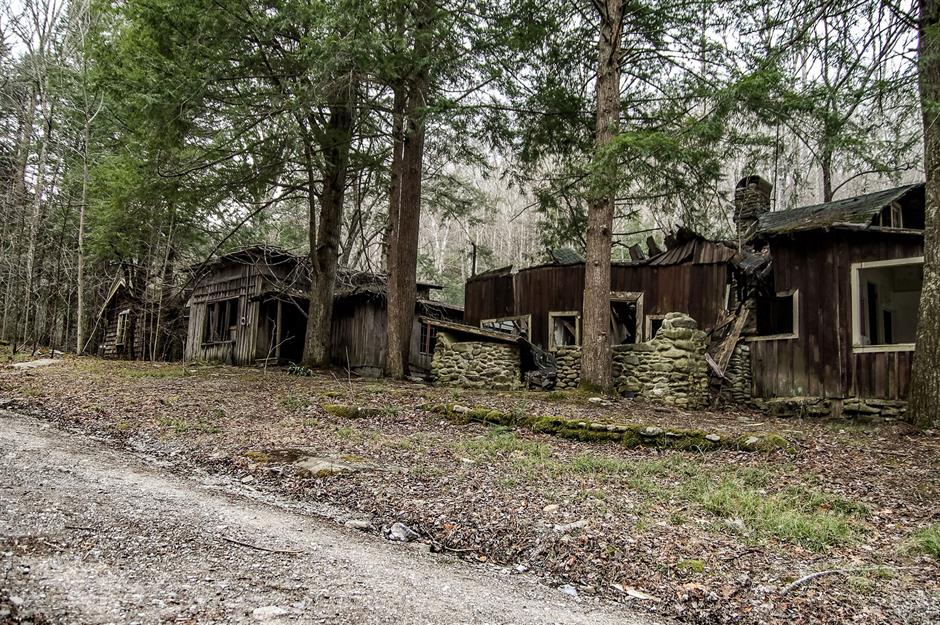
It appears that Elkmont’s story has a partially happy ending. A significant portion of this remarkable historic town is being rescued from ruin and receiving the attention it desperately needs. Unfortunately, other areas of the settlement haven’t been as fortunate as Daisy Town, with nature continuing to reclaim their historic structures. Nonetheless, the town’s spirit and history live on through the preserved cabins, which are now safeguarded for future generations to rediscover.
